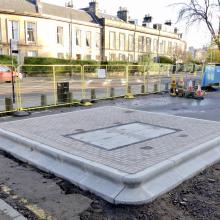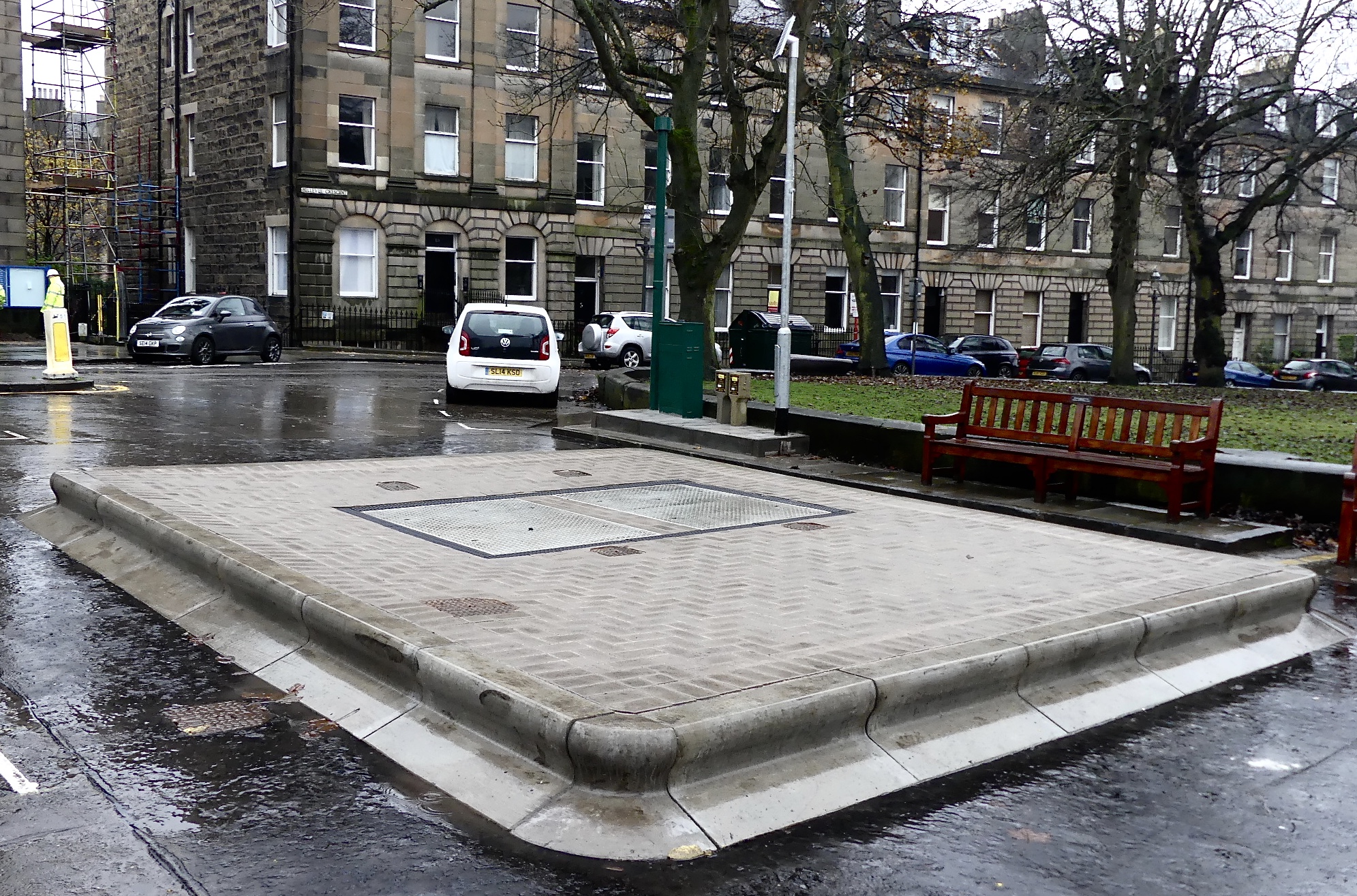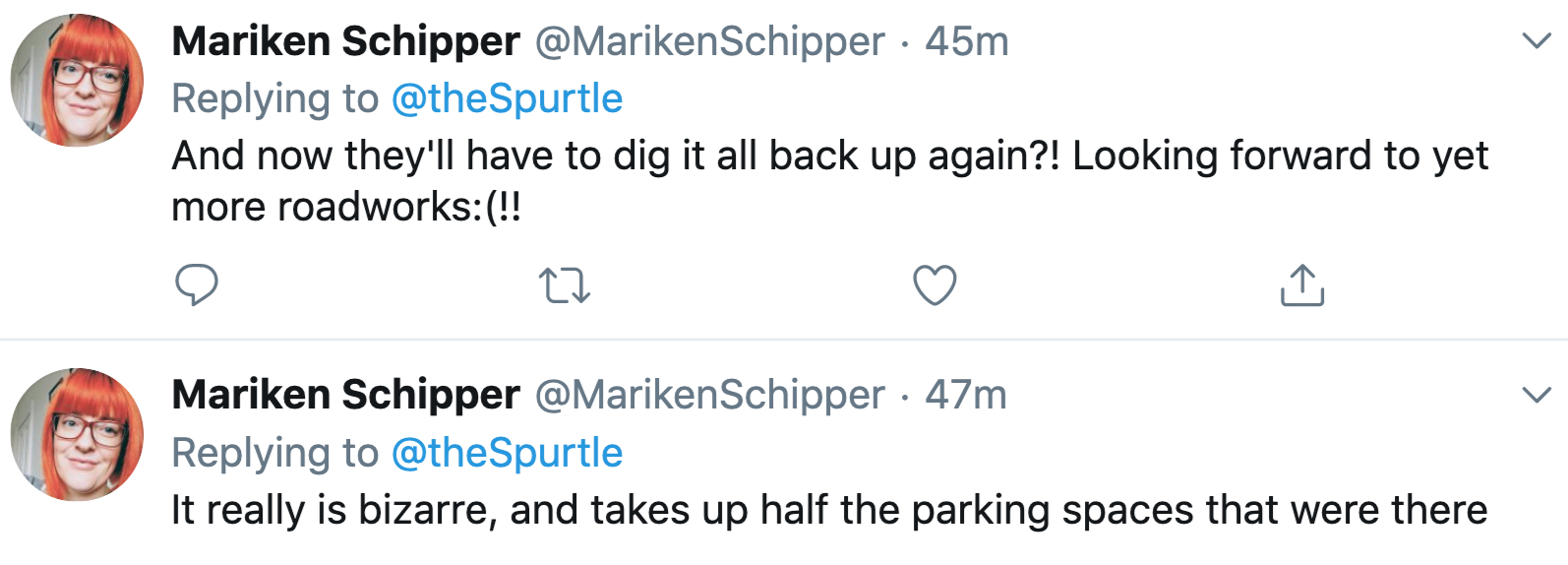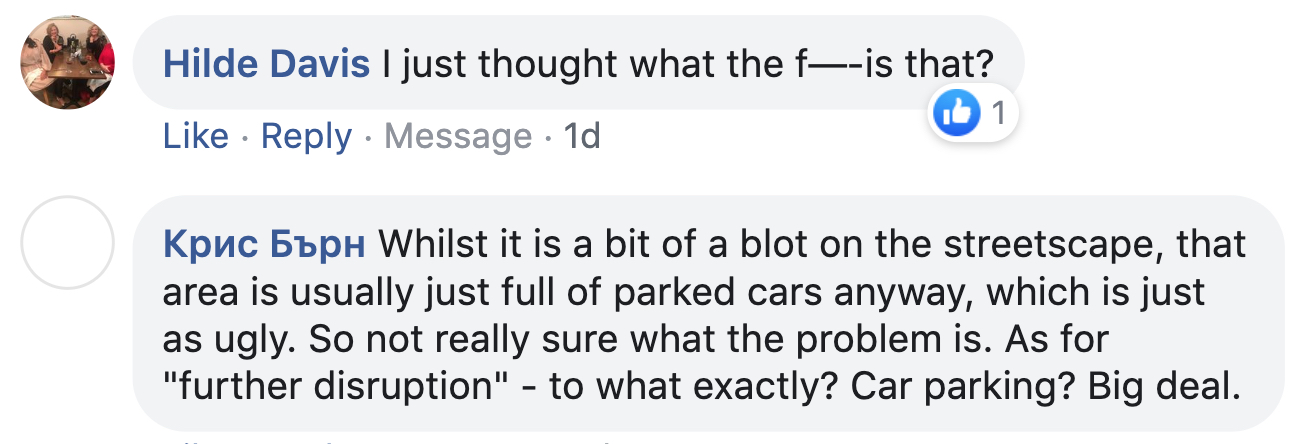
The new ‘gas governor’ that recently appeared in Bellevue Crescent is to be redesigned.
The Architectural Heritage Society of Scotland and seven locals who objected to the incongruous helipad-cum-picnic platform in the New Town Conservation Area (Issue 291, Ref. 19/04527/FUL) received email notification yesterday.
A Council Planning official wrote, ‘Scottish Gas Network have been advised that the works undertaken within the car park are unacceptable and would be refused planning permission.’
Gung-ho for gas flow
SGN may originally have thought they didn’t require planning permission, perhaps believing that they had Permitted Development Rights to proceed as they saw fit.
However, they were informed to the contrary by officers, and so applied for retrospective consent in September 2018.
But before any decision on this was reached, SGN steamed straight ahead with a raised platform designed to ensure access to equipment below by making it impossible to park on top. Associated poles, vent, and cabinet were situated beside the northern garden area.
It is not clear from the Planning official’s note precisely which aspects of the design are unacceptable.
‘They [SGN] are currently working on a revised scheme to address the issues, that will be resubmitted in the New Year.
‘When the revised scheme is submitted, neighbours will be re-notified of the amended scheme.’

Archaeologist doesn’t dig the works
Whatever the design issues, a letter from John Lawson, the City’s Archaeology Officer, to the Head of Planning is unlikely to have helped SGN’s cause.
Writing on 25 November, Lawson stated that – given the site’s historic context – ‘a programme of archaeological works should be undertaken prior to or during development here to fully excavate, record and analyse any significant buried remains’.
He continued, ‘However, having visited the site as part of the application process, the works have now been constructed without this [archaeological] work having been undertaken.’
He therefore regards as essential the excavation of trenches immediately alongside the structure to understand what impact this development may have ‘inflicted upon’ any potential surviving archaeology.
Lawson recommends that the gas governor and associated equipment should not be put in use until the necessary archaeological work has been completed by a professional archaeological organisation.
This will therefore entail a third tranche of excavation and disruption in Bellevue Crescent.

Compliments of the season
One wonders whether SGN is capable of feeling embarrassment. This latest gaffe comes hard on the heels of an allegedly over-enthusiastic attitude to gas connections on London and Forth Streets earlier this year (Issue 289), and a similarly clumsy and unauthorised gas-governor installation in Milngavie in 2014.
And if that hasn’t soured your mulled wine already, consider this point made to us by a Broughton resident earlier today.
‘All the work recently carried out from Dundas Street to Bellevue Place has been prompted solely by the need to provide extra gas supplies to the new Edinburgh St James. But it has all been funded by the levy that the national operator (SGN) places on everyone’s gas bill.
‘So – in essence – we're all paying both for the initial work and all the re-work that is necessary.’
Merry Christmas everyone, and a warm and prosperous New Year.
---------








Dear Spurtle,
You quote a Broughton resident stating that the work done by SGN is funded by consumer gas bills. However, this is incorrect in the case of the new governor on Bellevue Crescent.
Whilst consumer gas bills do (in a roundabout way) fund regular network maintenance and reinforcement, in projects such as the St James the developer is responsible for the cost of adding additional capacity to the gas supply.
SGN would be given an estimated consumption requirement from the St James developer, and then calculate if the gas network as it stands could handle the increased demand. If it could not, then SGN would carry out a costing exercise for the resulting upgrade works and provide the developer with a bill.
The developer can of course decide to not accept gas if they feel the cost is too high. The benefit of this is to the normal householder, who won't see their gas supply affected by big construction works next door. In fact, householders will usually find the network has been strengthened by the upgrade and at the developer’s expense.
I understand the sentiment that we’re paying for this work because it’s so often the case that big developers can just bully until they get their way, so I thought it’d be important to say that in this case at least we’re not fitting the bill!
Spurtle reader and local resident